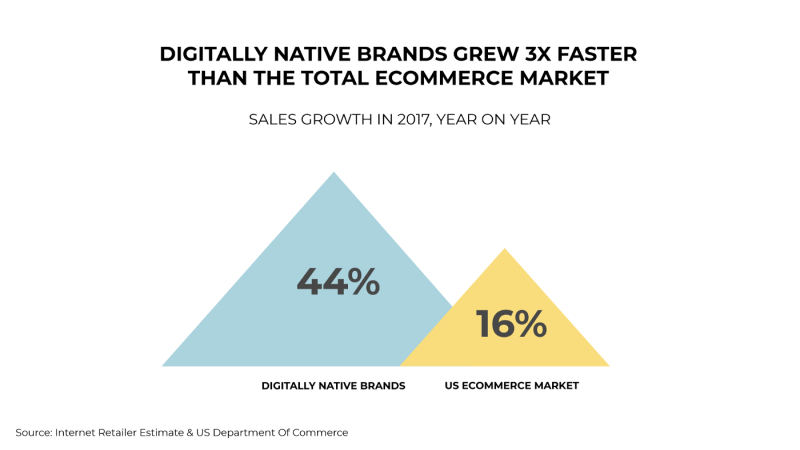/ Blog
The Hype Is Real. Here’s Why Headless Commerce Is A Game-Changer
Ganesh Chandrashekar
Head of Marketing & Growth
- DATE PUBLISHED (30/3/2021)
- READ TIME (5MIN)
Headless commerce is the biggest buzzword since ‘big data’. And like a wise man once said about big data— everyone talks about it, nobody really understands it, everyone thinks that everyone else is doing it, and they claim that they’re doing it too.
But what does it actually mean, and how does it work?
More importantly, how can it impact your business? The answers are predictably complex.
Headless commerce reimagines the architecture of a traditional online store by decoupling the front-end interface from the back-end infrastructure. At a simpler level, this means that your front-end and back-end can be delinked, letting you customise your store in incredibly creative ways, without affecting your back-end.
This allows greater innovation, experimental iterations, and accelerated speed to market — all crucial elements in a high growth e-commerce space.
There’s a problem with e-commerce platforms
Let’s take a quick look at the state of e-commerce today.
The COVID-19 pandemic has accelerated the shift from retail to e-commerce, indicating that the industry will grow by a whopping 20% in 2020. That’s 5 years of growth in under a few months.
E-commerce penetration has risen from 16% to 27% in just two months since the start of the pandemic. Major retailers like Walmart have been heavily pushing their omnichannel strategy, with online sales up 97% in Walmart’s last quarter.
These are big numbers. But the problem is with the platform.

Traditional e-commerce platforms are monolithic, and even minor customizations to the front-end are hard to implement, time-consuming, and might not really work across multiple touchpoints. This rigidity can be frustrating because it limits creativity and affects how brands can differentiate their customer experience.
Interestingly, the retail segment has made significant advancements in this front. Brick and mortar stores have been forced to innovate and attract eyeballs through immersive VR, augmented reality, and experiential ideas to draw footfall.
Online stores, however, look the same, feel the same, and share an almost identical customer experience, which in many cases is still not frictionless.
This is where headless commerce makes a difference.
It eliminates the rigid frontend-backend dependency and opens up unlimited possibilities for how you can visualize your brand, products, and overall customer journey.
All that’s great, but what’s the big deal about customer experience?
If traditional e-commerce already ‘works’, why should you fix it?
The answer starts with Amazon.
Headless is a great leveler for DNVBs
Amazon is the Google of e-commerce.
It’s good at giving you the best-seller you’ve heard of or the water filter for your fridge (the long tail). It’s not so good at the things in the middle. Amazon is great at selling you what’s on the table in the front of the bookshop… but it’s not very good at showing you what’s on the shelves at the back of the bookshop.
Benedict Evans, The Facebook Of E-commerce
Amazon has an inventory of ~12 million products, making it the largest online commodity market. Research indicates that 9 out of 10 customers price-check their favorite products on Amazon first, and almost 1 in 3 Americans has a Prime membership.
Amazon enjoys a whopping 49% of the e-commerce market share in the US, making it an incredibly important sales channel in any modern omnichannel strategy.
Here’s why this doesn’t work for vertically integrated ‘niche’ brands.
Amazon’s mission is to deliver cost-effective value to its customers, driving heavy competition within its category listings. Smaller brands that aren’t part of the FBA or Prime programs have to compete for visibility with competitors and Amazon’s own in-house brands that are strong in credibility.
This is a losing proposition for web-only Digitally Native Vertical Brands (DNVBs). Headless commerce allows DNVBs to focus on their core strength — exclusive, immersive and experiential shopping.

Experiential commerce is the answer
Even if you’re unaware of what DNVBs are, chances are, you’ve encountered or even shopped from a few. It’s impossible to miss them in the age of Instagram.
Born and raised in the world wide web, DNVBs are part of the vertical commerce movement and share a common DNA.
They’re mostly D2C, community-focused brands with a razor-sharp focus on targeted categories, innovative and commoditized product lines, and a deep obsession with customer experience — which pays them back in cult-like customer loyalty and increased margins.
Think Allbirds, Harry’s, Casper, Dollar Shave Club, and Warby Parker — you get the general idea.
Headless commerce is a force multiplier for DNVBs.

It unlocks unlimited potential for niche brands to radically transform their customer experience beyond the limitations of traditional platforms and insulates their products and categories from increasing competition in the space.
Building intimate customer journeys is an important differentiator in the Wild West of e-commerce that’s not controlled by Amazon, but that’s not all. Headless commerce unlocks new possibilities for an omnichannel strategy that can include voice-activated retail, smart displays, and IoTs, and multiple non-mobile touchpoints.
Experiential offline retail is a crucial space that many DNVBs (for good reason) miss out on, and headless commerce might just be the framework that bridges that gap and simplifies the omnichannel experience without the need for a complete backend overhaul.
Since almost every part of the headless architecture is highly customizable, the system can support multiple third-party integrations and seamless bind supply chain management with financial and customer management.
It’s smart, it’s scalable, and it helps brands tailor compelling stories for more immersive shopping.
With that out of the way, it’s time for the hard questions.
What exactly is involved in setting up a headless architecture, and what are the costs, compromises, and complications to watch out for?
We’ve got more answers in our follow-up article. Stay tuned!